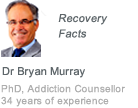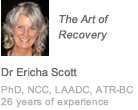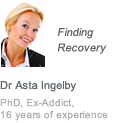Heroin Addiction
Heroin addiction is not confined to any one section of our society, and not all heroin addicts are homeless vagabonds wandering the streets looking for a way to get the next dose, or lying in an apparently comatose state while high. Understanding what heroin is, what it does and why it is so all-pervasive is key to recognising the signs of addiction, and understanding how it affects not only the heroin addict, but friends, and family too.
Heroin – where it comes from and what it is
Heroin addiction has been part of our society for as long as we have used the drug as an analgesic – over 7000 years. Heroin is made from morphine, which in turn comes from the seed pods of the opium poppy. It is extremely addictive – within a week of first use a high percentage of people will become physically reliant on heroin, some can be addicted even after the first fix.
- Heroin is usually sold as a white or brownish powder or as the black sticky substance known as “black tar heroin.”
- Purer heroin is becoming more commonly available, however most heroin available on the street is mixed or diluted with sugar, starch, powdered milk, or quinine. Street heroin can be mixed with strychnine or other poisons.
- Heroin addicts do not know the strength of the drug they are buying, or its true contents, so the risk of overdose or poisoning is high.
- Heroin can be injected, sniffed, or smoked, although injection is the most common method of use by heroin addicts. A heroin addict may inject up to four times a day, either intravenously or intramuscularly.
A profile of heroin addiction
As the methods of use change so the age, gender and other demographics of heroin addiction profiles shift. It is a constantly moving picture, with an ever more diverse group of users. Older addicts (30+) are still one of the largest user groups looking for help in most national data analysis reports. But there is a marked increase of new, younger users who like the less expensive, high-purity heroin that can be sniffed or smoked rather than injected. Heroin addiction has also been noted in more affluent communities in recent studies.
Today’s heroin addicts range from middle class teenagers to older inner city addicts; many hold down jobs and manage their addiction to a point, although they continue to use heroin every day. Others quickly spiral out of control and into the vicious cycle of having no money to get the next dose they need, so descending into burglary, prostitution and other even less savoury, aspects of the criminal underworld.
The effects of heroin addiction
When a heroin addict ingests a dose they will get a rush of euphoria, they may breathe less deeply, they will not be able to think clearly, if at all, they may vomit (and if so they risk asphyxiation by choking on the vomit), but they will not feel pain to any extent. A pregnant woman might spontaneously abort her baby.
Long term the physical effects of heroin addiction include:
- infections such as HIV, Hepatitis B and C
- bacterial infections
- collapsed veins
- abscesses
- infection and inflammation of the heart lining and lungs
- arthritis and other rheumatologic problems.
Many of the additives used to dilute street heroin may include substances that do not readily dissolve, so clog the blood vessels leading to the lungs, liver, kidneys, or brain. In turn this can result in infection or even death of small patches of cells in vital organs.
Sharing injection equipment exposes the addict to the most severe consequences of heroin abuse-infections, which heroin addicts can then unwittingly pass to their sexual partners and children. Statistics show that babies born to addicted mothers are at a higher risk of cot death.
These are all physical side-effects and consequences of heroin addiction, but for the family and friends of an addict the life-style consequences of heroin addiction are equally important. To watch someone you care about gradually slip away into a nether-world of addiction that includes the addict losing everything they once loved is possibly even harder than being addicted to heroin and chasing just the next fix, the next high, to the exclusion of everything else.
Recognizing heroin addiction
Heroin Addiction is not always easy to spot, but there are things to look out for.
- Addicts may disappear from time to time when they on a binge of using, or chasing ways to get more money for their habit. Many will lie about where they have been and what they have been doing.
- Heroin addicts who inject will get track marks (scabs and scars where needles have been repeatedly inserted and little infections erupt). This may also be accompanied by continuous scratching as the tracks are itchy and uncomfortable. They may start to wear long sleeves to cover the marks of their habit, even in hot weather.
- Mood swings from a happy-go-lucky, all is right with my world can quickly turn to aggressive and depressed phases in usually emotionally stable people.
- As the focus of a heroin addict’s world moves to chasing the next fix they may neglect their professional standards, or their work at school or college to a point where they lose the job or fail exams.
- Heroin addiction is an expensive lifestyle, and a heroin addict needs a lot of money to fund their need. Addicts may begin to sell goods, get in trouble with police if they are caught robbing, mugging or burglarising, they may begin to sell drugs themselves or become prostitutes for hire. They will do anything and everything to get the money they need.
Helping a heroin addict
Heroin Addicts are not easy to help, they will be afraid of admitting they have an addiction, and what the consequences of that admission might be. As some one watching a loved one disintegrating under the weight of their addiction you naturally want to help and support them. But this sounds so much easier than it is – when you know that your most precious jewellery has been traded for drugs, that the person you care about is associating with people you regard as dangerous and unsavoury, and when your life is completely disrupted by their bizarre behaviour – it is hard.
The addict will nevertheless need advice, support, acceptance and tolerance – from themselves, their family and their friends. As soon as they are able to admit the problem everything changes. At this point the support and understanding of family and friends is even more important. As the addict undergoes rehabilitation it helps to know that their old life is still there waiting for them.
Once clean, addicts can develop strategies for dealing with problems as they rebuild their lives. They can acknowledge their addiction, and what they may have done in the worst times. It is a long hard struggle, they may lapse or relapse, but that is not the end of their battle. Heroin addiction and recovery is a lifelong task and discipline, for everyone it touches.












